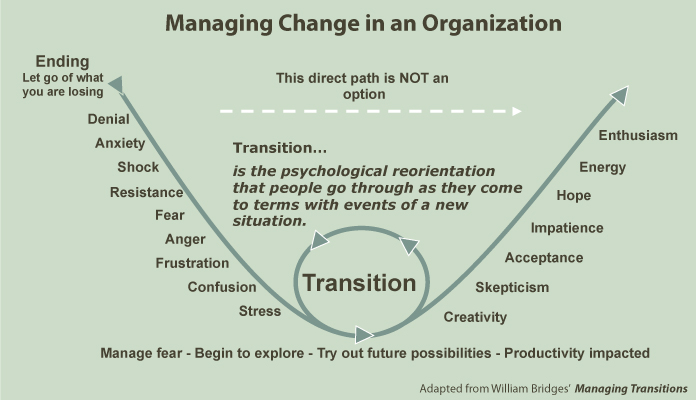Is your organization going through a transformation? It could be a digital transformation, business merger, strategic transformation, operational restructure, change in operational model.
If so I need to ask you three important questions:
- Does your transformation plan start with cultural change?
- Are you trying to change the culture or creating a culture of change?
- Are you interpreting staff resistance as rejection of the change itself vs rejection TO change? Peter M. Senge’s quote (featured image) captures that difference quite poignantly.
Four deadly transformation myths are at play here:
- Myth: The goal of Transformation is to achieve a specific change (e.g. adoption of new operating model, system, organizational goal) and therefore has a specific visible end-point.
- That would be the case if you are changing an unemotional unchanging system. That is NOT the case if you are changing ever-evolving and ever-changing people. Transformation never ends because change never ends.
- Myth: The Transformation Plan details the fastest, most efficient, and least disruptive way to get to that goal. This may even take the shape of a project plan that introduces a set of change management activities to transition our staff and achieve “adoption”. We often refer to Kubler-Ross’s change curve or more recent William Ridges’ change curve (shown below) and plan out manager training, staff engagement strategies, and team-building activities that need to take place to accomplish the Transformation.
- Nope. In today’s world, change is a constant. Transformation is a constant. Markets keep changing. Customers keep changing. Competition keeps evolving. If anything, it’s evolving at a faster pace then ever.
- Myth: Perceiving organization as an entity separate from the staff… and consequently planning organizational change without staff being the epicenter of the Transformation. This makes our Transformation plans heavy on business / process / system change strategies but limited in staff change strategies.
- That makes absolutely no sense. Every part of the business, process, and system is managed by staff. People are ultimately the vehicles of change. Every Transformation starts and ends with staff.
- Myth: Transformation requires increased levels of control and secrecy to minimize drop in staff morale, confidence, and ability to control damages associated with failures. It’s a sensitive matter that requires increased levels of management.
- Actually, increased control and secrecy will have the opposite effect of staff trust. It will increase skepticism, confusion, and frustration (even fear and anger). The only thing that control and secrecy protects is those exercising control and secrecy. The staff we require to transform actually need a lot of information and some level of control to be able to transform.

Transforming organizations is primarily about evolving people…
Transformation is no longer a Phase in Organizational history.
Change is a Constant. Therefore, Organizational Transformation is a Constant.
If that’s the case, how does our Transformation model has to change?
- Understanding that ability to continuously Transform is a new “forever” competence, not something we can hire a consultant to assist us for a “period of time”
- Understanding that forcing people to change through authority / chain of command is NOT effective and not sustainable long-term. Competent staff are not motivated this way. It doesn’t last and it doesn’t scale.
- Create a culture of change rather than changing the culture. Create a vehicle for continuous Transformation.
- Start and end with people who fuel and execute (or fail) the change. Transforming organizations is primarily about evolving people… not org structures or processes.
What does that look like?
Let’s reflect on the change curves (as per example above). Can we appreciate that most of the steps entailed involve EMOTIONS and access to information (e.g. confusion, skepticism), not system of financial plans? Can we appreciate this cycle continuously repeats? Can we appreciate that most of staff resistance is because they are stuck in one of these steps? Finally, can we accept that in MOST cases it’s our faulty leadership and poor Transformation approach, not their personality, that is causing them being stuck and resisting? Why us? Because we have more control, far more information, we own the Transformation plan, and we are ultimately accountable for (and to) our staff.
Here are the new pillars to drive successful continuous Transformation:
- Invest in positive culture to provide EMOTIONAL SAFETY during continuous change. This includes healthy risk, healthy failure, independence, innovation, etc.
- Hire EMOTIONALLY MATURE EXECUTIVES that inspire and lead (promotes change) rather then manage with authority (promotes status quo).
- Complete overhaul to your INTERNAL COMMUNICATIONS PLAN to provide unprecedented levels of transparency and communication. Minimize the chance your staff are confused, uninformed, and drawing their own conclusions (typically negative). Always lead / direct / motivate / reinforce with WHY.
- INVEST TRUST to create trust. Trust your staff by being transparent and even vulnerable to them (especially with difficult questions / failures) to encourage trust back. If you can’t do it from a position of safety, why would you expect them (who have limited info and control) to do trust you?
- Only if you have the above FOUNDATIONS, can you effectively undertake Transforming you operational model, your systems, your processes, etc.
Create a culture of change rather than changing the culture!
